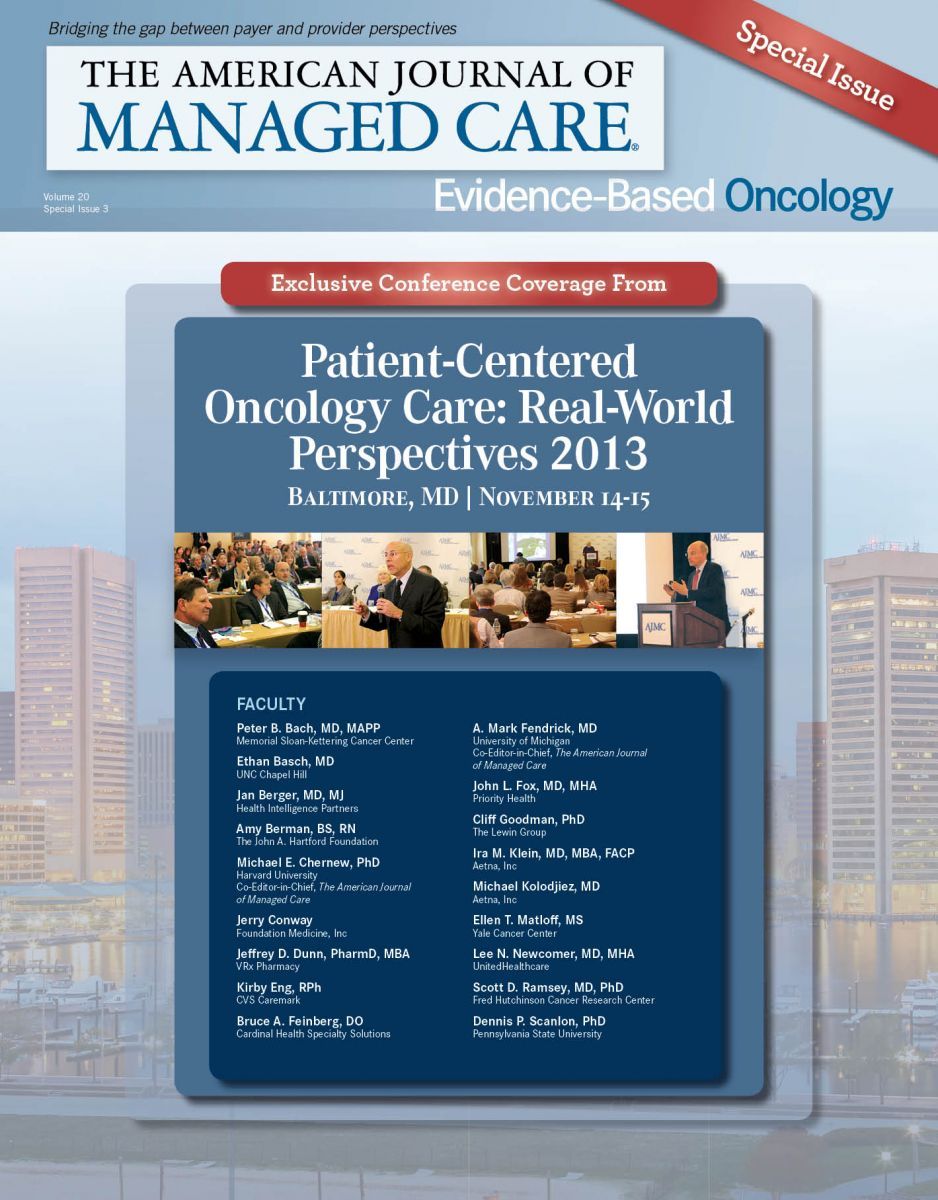Publication
Article
Evidence-Based Oncology
Care Reflects Patient Choice, but Having the Data Reflect 'Consumerism' Is Another Matter
Author(s):
Cliff Goodman, PhD, senior vice president and principal, The Lewis Group, moderated the panel discussion, The Role of Consumerism in the Deliverability of Care.�
Cliff Goodman, PhD, senior vice president and principal, The Lewis Group, moderated the panel discussion, “The Role of Consumerism in the Deliverability of Care.” Panelists included Amy Berman, BS, RN, senior program officer, the John A. Hartford Foundation; Dennis Scanlon, PhD, professor, health policy and administration, Pennsylvania State University; and Manasi A. Tirodkar, PhD, MS, research scientist, National Committee for Quality Assurance.
In her work with The John A. Hartford Foundation, Amy Berman, BS, RN, seeks opportunities for change. The fundamental shifts in the marketplace are about more than just looking at billing and point of service, Berman stated. There are real opportunities for working with patients to structure their goals of care and improve their outcomes.
Cliff Goodman, PhD, asked Berman to elaborate on how the patient will be regarded in light of the “mega trends” in the healthcare system. “We certainly are in an environment where there are greater costs that are going to be put back on the individual, on the consumer,” she said. There needs to be a greater emphasis on the value proposition at the point of service. Her question: “How does this really fit in terms of people cycling in and out of hospitals, which are really typically poorly designed for continuity?”
Dennis Scanlon, PhD, stated that future research should explore areas surrounding patients’ emotional and family support, their level of understanding regarding their conditions and risks, and how well those risks and treatment options have been communicated. “At the end of the day, we need to bring it all together to understand how do we redesign the care delivery system and provide financial and nonfinancial incentives to redesign it.” He added that both good and bad reasons for variation in care exist, which raises the level of complexity. However, data are not currently being collected to reflect the variability inherent in incorporating patient preferences. Scanlon asked, “How do we adjust that outcome based on patient preferences and clinical evidence and acknowledge that the outcome may vary, depending on not only the clinical situation, but the patient’s preferences?”
Goodman asked Manasi A. Tirodkar, PhD, MS, to comment on whether a pathway currently exists for creating quality measures that take patient preferences into account.
“We have been looking at potential measures of shared decision making,” Tirokdar said. “Part of the problem is that data simply don’t exist.” She noted that this issue is primarily on the provider
side due to limitations with electronic health records, claims, and other standard forms of data collection. The NCQA is looking into patient-reported outcomes that reflect the shared decision
making.
Scanlon stated that it is important to be able to gather information about discussions between the patient and provider as well as the regimen and outcome. “We need some detail about that interaction, about discussions about risk, about discussions about treatment options, whether patients feel that their views were considered, and also how healthcare was organized and delivered,” he said. Tirodkar noted that decision aids are available to help standardize these discussions. However, they are based on a single treatment decision. Also, patients typically do some of their own research.
Incorporating patient decision making and providing the appropriate setting to help patients get the information they need is very complex, Scanlon said.
Goodman asked the panel, “How would each of you propose to enhance the role of the informed patient/consumer in rocky economic conditions?”
Berman said that although there are many challenges with measuring the various aspects of patient-centered care, “Consumerism has arrived.” What is known, she said, is that patients
need a diagnosis, a prognosis as to the likely course of the disease, and choices about their care. “What’s the benefit now, what’s the longer-term benefit, and cost?” With this information, the patient has the appropriate context and will receive better care in the process.
Tirodkar added that patients need help navigating the system. “It could be a nurse navigator, a patient navigator, or a care coordinator,” she said. “There are various different people that can
EBO
fulfill that role (who) can also provide that information on finances and navigating payer systems and reimbursement.”


